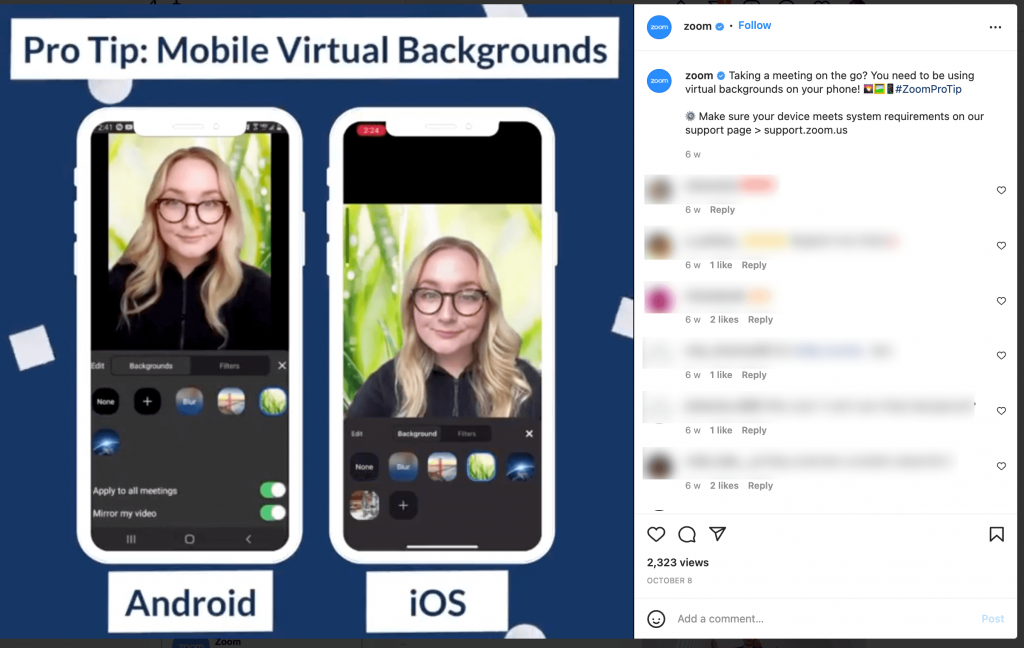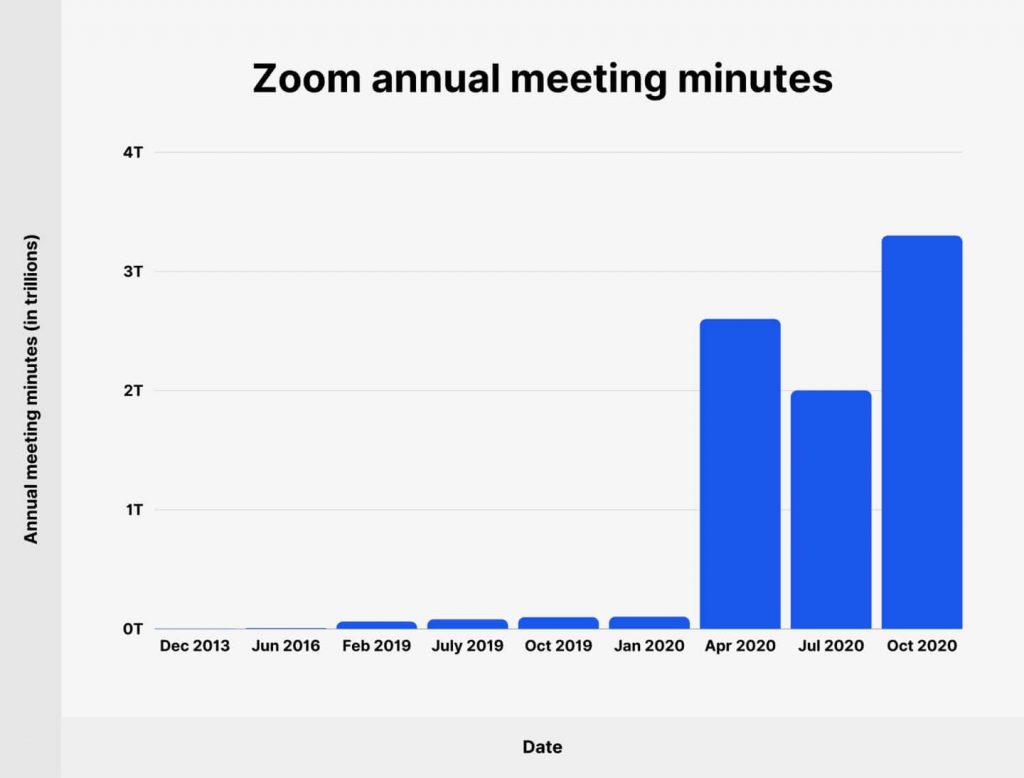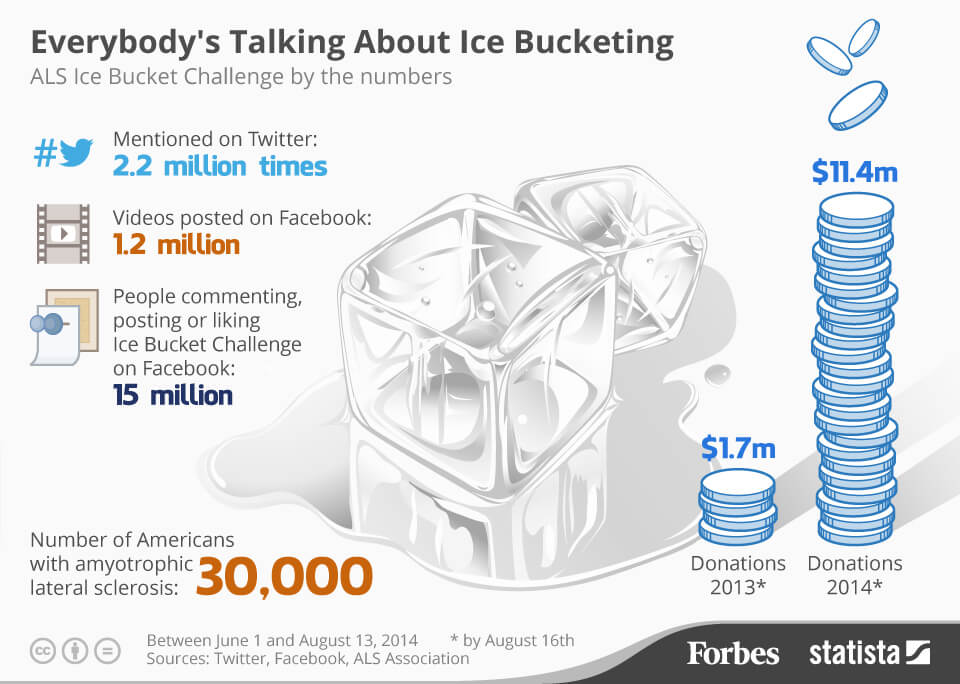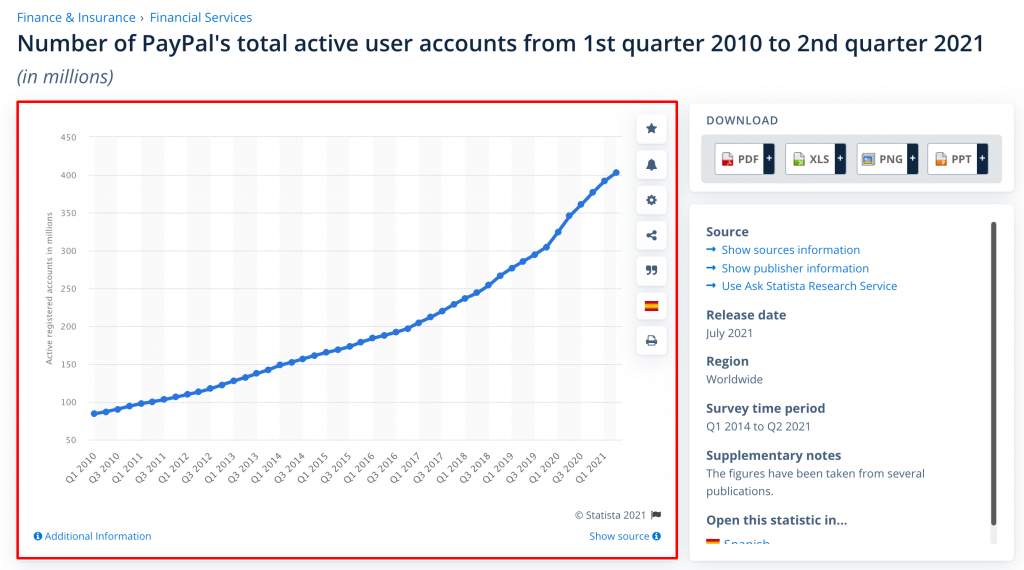Imagine pouring all your effort, capital, and creativity into creating a great product but no one gets to know about it.
Not a great start for your new idea.
As a marketer or business owner, it’s your job to make your product reach as many people as possible who might be interested in using it.
In other words, you can try to make your new product go viral.
This is exactly what we’ll talk about in this guide.
More specifically, we’re going to cover tactics that include:
- Investing in social media
- Establishing a referral program
- Using UGC
Plus, many more tips and examples to help your product achieve virality.
We won’t keep you waiting anymore; let’s get started.
Table of Contents
What Does it Mean for a Product to Go Viral?
7 Tips for How to Make Your Product Go Viral
4 Examples of Products that Went Viral
What Does it Mean for a Product to Go Viral?
When we say that a product goes viral, we basically mean that it widely spreads online at a very fast rate.
The process is similar to how pieces of content like YouTube videos, memes, and other social media posts go viral; by gaining a large amount of exposure in a short period of time.
We’ve all seen those popular cat videos that reach millions of views in just a matter of days; that’s definitely a type of viral content.
When it comes to products, they usually go viral through fun and engaging marketing techniques that make people share them online.
This repeated procedure of seeing a product or content, clicking on it, having the desire to share it, and then actually sharing it, is more often than not referred to as the viral loop.

A good example of a product that went viral is Dollar Shave Club; a men’s subscription razor company.
In 2012 it released a viral marketing campaign called “Our Blades Are F***ing Great” which has generated over 27M views on YouTube and really gave the business a boost.
Actually, according to Google Trends, the popularity of the search term “dollar shave club” saw a significant increase in March 2012, when the campaign went live.

Image Source: Google Trends
As you can see here; finding creative ways to make your product reach a large number of people online can really help your business get off the ground and gain new customers.
Let’s have a closer look at those ways.
7 Tips for How to Make Your Product Go Viral
Like we just covered, in this part of our guide we’re going to share some tips that you can take advantage of in order to create a viral product.
We’ll try to cover a wide range of them that can be applied across different industries.
Without further ado, let’s get started.
Tip #1: Invest in growing your social media presence
Any big or small business should know that investing in its social media presence is a no-brainer.
This doesn’t necessarily mean that it should utilize every digital marketing strategy out there, but being active on social networks, creating engaging content, and building an online community, are all a must for a company to grow.
What’s more, a key element to a product’s virality is the use of contests and giveaways.
This allows brands to incentivize their audience into sharing a product online with their followers in exchange for a reward which can be a free product, free trial, gift card, or anything else.
It’s really a win-win situation if you think about it; users receive a reward and businesses drive a lot of brand awareness.
While there are many giveaway ideas available, a good tactic is the use of branded hashtag contests.
Let’s have a look.
Example: Trello
Trello is a popular project management and collaboration SaaS.
In order to promote the tool, the company decided to run a branded hashtag contest by incentivizing users to post a photo and use #WhereITrello, for a chance to win limited edition swag.

Image Source: Twitter
The result was thousands of posts using the hashtag across different social networks.
Although this campaign takes advantage of UGC as well – more on this later – it’s easy to guess that it offered the brand plenty of exposure through every single post shared and the total impressions generated.
Such interactive initiatives give products a great boost and can help them get off the ground and achieve virality.
In fact, according to research, 34% of new customers are acquired through contests.
Interesting, right?
Let’s continue.
Tip #2: Demonstrate your product’s value, in a fun and engaging way
No one talks about boring marketing campaigns.
This is exactly why marketing efforts that demonstrate your product’s value but are unique and fun at the same time tend to bring many benefits.
They have the chance to make your product go viral and stand out from its competitors in ways that traditional marketing methods usually can’t.
What’s more, if your campaigns are unique, they’ll encourage word-of-mouth marketing; an integral part of a product’s virality.
Why not see an example to make this tip a little clearer?
Example: Aegean Airlines
Aegean Airlines is Greece’s biggest airline company.
In order to encourage people to book more summer flights, it came up with a fun and engaging idea that caught everyone’s eye.
It set up a big screen in a central location in Berlin showcasing the weather in different parts of Greece in real-time.
Every time it got cloudy, bypassers only had a few minutes to take a photo of the code that appeared, in order to get a 50% discount.
Codes are actually widely used by companies, whether they’re discount or referral codes, and can be very beneficial in attracting potential customers.
To sum up, coming up with marketing tactics that are out of the norm can really make a product go viral, whether it’s an eCommerce tool or a major airline.
Let’s continue.
Tip #3: Stand out from the crowd
Another way to prepare your product for virality is by making sure that it’s unique and stands out from the crowd.
After all, why would a normal product that’s the same as everything else on the market go viral?
What we suggest you do is find your product’s USP, or unique selling proposition, and make sure you promote it creatively through a high-quality content marketing strategy.
That way, you’ll generate a buzz around it and be prepared for viral growth.
Of course, standing out from the crowd doesn’t only apply to the product’s capabilities themselves but also the way in which you promote them to your target audience.
Personal care brand Dove did a great job at this by creating a viral video.
Let’s have a look at it.
Example: Dove
As we just noted, Dove invested in video content that wasn’t necessarily fun or entertaining, but certainly stood out from the crowd.
The video reveals the internal struggle that many people face every day.
Not only does it spread the brand’s message, but it also serves as a great guide for viral marketers.
The results?
The video was the most-watched online ad ever with over 163 million global views and 4.6 billion impressions when it was released back in 2012.
This just goes to show that products and initiatives that are unique and create a buzz have a high chance of going viral.
Let’s continue.
Tip #4: Incentivize social media sharing and word of mouth
Building a strong base of loyal social media followers can play a major role in helping your product go viral.
This is because you have direct access to people who are already aware of you and are part of your target market – you can ascertain that by having a look at your follower’s demographics.
What you should ideally do is invest in your social media presence early on – as we covered in tip number one – in order to be ready for virality when your product launch date arrives.
A key tactic here will be to incentivize your followers to share your social media initiatives in order to gain as much exposure as possible through the power of word-of-mouth and build hype.
The definition of viral marketing itself is posts created with the intent of receiving mass awareness through repetitive sharing.
Since we’re talking about incentives, a reward should be given to those who share you on Facebook, Instagram, LinkedIn, or any other social media channel.
One of the best methods to leverage social sharing is through giveaways – which we also saw earlier – but they come in many forms.
Let’s have a look at one.
Example: ColourPop Cosmetics
ColourPop Cosmetics is a popular beauty brand that decided to host a social media giveaway.

Image Source: Twitter
As you can see above, it incentivized its followers to follow certain Twitter accounts, share the tweet, and reply with a comment in exchange for the chance to win a wide range of products.
This resulted in over 5,200 likes, 4,400 retweets, and 3,400 comments which all contributed to the brand gaining a huge amount of social media awareness that could potentially make it go viral.
Giveaways are particularly useful for product launches since they’re an amazing way of getting people to learn about a new product and share it with their followers.
Sounds good, right?
Author’s Tip: You can further promote your giveaways by collaborating with influencers, who will share them across their social media platforms.
All in all, leveraging social media is an integral part of making a product go viral among your target audience.
Let’s move on to the next tip.
Tip #5: Establish a referral program
If you want your product to go viral then referral marketing is a must.
What this means is that by establishing a referral program, you allow your most loyal customers to refer their network to you in exchange for a reward.
It’s really a win-win situation if you think about it, hence why it’s one of the best customer acquisition strategies out there.
There’s a wide range of businesses using referral programs, from large corporations to small startups, since they can also make your product go viral if they’re implemented successfully at the pre-launch stage.
According to a study, people are four times more likely to buy a product when it’s referred to them by a friend.

Image Source: Customer Gauge
Let’s now have a look at an example of a SaaS referral program that made the product go viral.
Example: Dropbox
Dropbox is one of the world’s most popular SaaS companies and it’s referral program is possibly one of the most famous cases studies.
In September 2008, the tool had 100,000 registered users and by December 2009 it had 4 million of them.
That’s an increase of 3,900% in just 15 months!
How did they do it?
By establishing a two-sided referral system, they decided to reward people with more free storage space not only for referring their friends but also for accepting an invitation; meaning that both the referrer and the referred people got rewarded.

By the numbers alone, it’s easy to understand that the referral program made the product go viral by greatly expanding the customer base in a short period of time.
Moving on to the next tip we have for you.
Tip #6: Use user-generated content (UGC)
In this part of our guide, we’re going to talk about user-generated content (UGC).
This is a type of content created by individual creators on behalf of brands, who, in turn, often post it on their own social media profiles.
After all, one of the best and most cost-effective ways to attain virality is to share what your existing audience is saying about your business.
The benefits of UGC include increasing brand awareness and trustworthiness, as well as being able to contribute to viral product campaigns.
Let’s have a look at an example.
Example: GoPro
You all know one of the world’s most famous action camera companies, GoPro.
The brand has a strong presence across all the major social media platforms, but its UGC campaigns in particular have proven to be very successful.
By launching a hashtag campaign called simply #GoPro, it’s managed to source a large amount of Instagram content by people sharing their adventures by using their GoPro cameras.

Image Source: Instagram
The results?
There are almost 50 million posts showing the product’s capabilities and driving lots of awareness for the brand, which greatly contributes to its virality.
Let’s continue.
Tip #7: Build virality into your product
One of the key elements of a product’s ability to go viral is to build virality within the product itself.
Simply launching and promoting a product isn’t enough; you need to integrate features that’ll trigger the user’s attention and incentivize them to share it with their network.
This is how virality works and businesses should optimize their products with elements that encourage word-of-mouth and collaboration between users, when applicable.
The latter in particular is very important in order to build a network effect; which is the situation where the value of a product or service depends on the number of users who leverage it.
Let’s see a great example of such a product.
Example: Slack
Slack is a real-time collaboration app that has seen significant growth over the last few years.
In fact, from a few thousand users in 2014 the tool reached over 12 million users in 2019.

Image Source: Slack.com
How was this viral growth achieved?
For a start, the fact that it’s a product based on collaboration makes it inherently viral, since it fuels the network effect and constantly attracts new users.
If you’ve not tried it yet, in order to use Slack, you must invite other users to join and collaborate with each other.

Makes sense, right?
The same thing applies to other products like Facebook and WhatsApp.
The whole point of being on WhatsApp is so you can contact the people you know.
Overall, products with built-in virality tend to achieve high growth rates and viral success in a relatively short period of time.
While the examples we’ve shared so far serve as great case studies of how a product can go viral, let’s see a few more and dive deeper into what made them achieve this.
4 Examples of Products that Went Viral
This section of our guide is all about showing you some examples of companies that went viral.
Let’s get into it.
Example #1: Airbnb
Airbnb is a great case study of a company that became known worldwide in a relatively short period of time.

Image Source: Airbnb.com
There are many reasons why this happened, but besides disrupting the hospitality industry, Airbnb really took off due to referral marketing
By implementing a solid referral program, the company increased signups and bookings by over 300% every day.
Each time a user referred another person to the platform, both parties received $25 of credits to spend.

Image Source: Medium.com
What’s more, Airbnb took this a step further and personalized its referral programs so users would feel more ownership of their invitation landing pages and emails.

Image Source: Medium.com
Interesting, right?
It’s hardly surprising that when this system was implemented the company saw a surge in demand which really helped it get off the ground.

Image Source: Google Trends
This is how Airbnb managed to achieve virality and take advantage of the power of word-of-mouth.
Let’s have a look at another example.
Example #2: Zoom
Online conferencing tool Zoom really got into our lives when the COVID-19 pandemic struck and the need for online meetings increased exponentially.
It’s true that the timing played a great role in the product’s virality, but there are other reasons to take into account, too.
For instance, the company leveraged UGC by launching a virtual background contest where it prompted users to share their background during Zoom calls and use the hashtag #MeetHappy.

Image Source: Twitter
Just to give you an idea of how successful the campaign was, the following tweet alone gained over 5 million impressions and 430,000 likes!

Image Source: Twitter
Although it began in 2020, it was carried over into 2021 to help maintain the product’s viral status.
What’s also impressive is the fact that Zoom even created a dedicated campaign page to host leaderboards, contest rules, announcements, and more.

Image Source: Moondustagency.com
Going back to the first tip we shared with you, it’s also clear that Zoom has invested in building a strong social media presence.
On Instagram for example, it combines useful tips on using the product with funny clips…

Image Source: Instagram
…and has managed to gather over 100,000 followers.
These are some of the ways that Zoom managed to become viral and achieve such rapid growth.
In the following image, you can see the annual meeting minutes chart, which in October 2020 was up by 3,300% compared to the previous year.

Image Source: Backlinko
Let’s move on to the next example we have for you.
Example #3: ALS Ice Bucket Challenge
Although it’s not a product, the ALS Ice Bucket Challenge is a great example of how something can go viral.
Taking place in 2014, it was an online effort to raise awareness for people with Amyotrophic Lateral Sclerosis (ALS) disease and to raise funds.
The campaign eventually raised over $220 million worldwide in the span of a few weeks.
Impressive, right?
In fact, over 17 million people participated and it went viral on social media as well through social sharing and word-of-mouth.
In the following image by Statista, you can see the campaign’s impact in numbers.

Image Source: Statista
From such metrics, it’s pretty clear how the network effect can influence a campaign’s virality.
The Ice Bucket Challenge campaign combines many of the tips we looked at earlier in our guide, such as standing out from the crowd, using user-generated content, and having a strong social media presence.
All of the above contributed to a spike in search demand for Amyotrophic Lateral Sclerosis.

Image Source: Google Trends
Let’s continue to the last example we have for you.
Example #4: PayPal
This last example we have for you is all about fintech company PayPal.
PayPal managed to grow its user base exponentially through a successful referral program, as well as from rewarding people who sign up to the platform.
Originally, it was offering new users $20 if they opened an account and another $20 if they referred someone.
At one point, PayPal was even offering $100 for new users!
The most recent program offered $5 for every new account opened through signup or a referral.

Image Source: PayPal
Through the initial strategy, PayPal managed to acquire 100,000 new users in the first month and reach a 10% daily customer growth rate.
Any marketer would agree that it’s pretty impressive.
This viral growth strategy played a major role in the company currently having more than 400 million users accounts.

Image Source: Statista
PayPal’s case study shows that referral marketing can really help a product become viral and achieve impressive growth rates.
Of course, other elements should ideally be taken advantage of as well, like a strong social media presence and standing out from the crowd.
PayPal is good at creating viral marketing campaigns in general, like the one below.
It’s racked up almost 6.5 million views on YouTube; a great example of how visual content can help you achieve virality.
Those were a few of the best examples showcasing how a product can go viral.
Let’s wrap things up with some final words.
Before You Go
There you have it.
This is the end of our guide on how to make your product go viral.
We truly hope that you got something out of our wide variety of tips and that you’ll revisit them when you need to.
We also believe that our examples were more than enough to inspire you to take your viral marketing effort to the next level!
However, if you feel like you need some guidance with your referral programs in particular – which can be an integral part of a product’s virality – don’t hesitate to give Viral Loops a go.
We’ll guide you step-by-step in taking advantage of referral marketing to optimize your results.
Thanks for reading.
